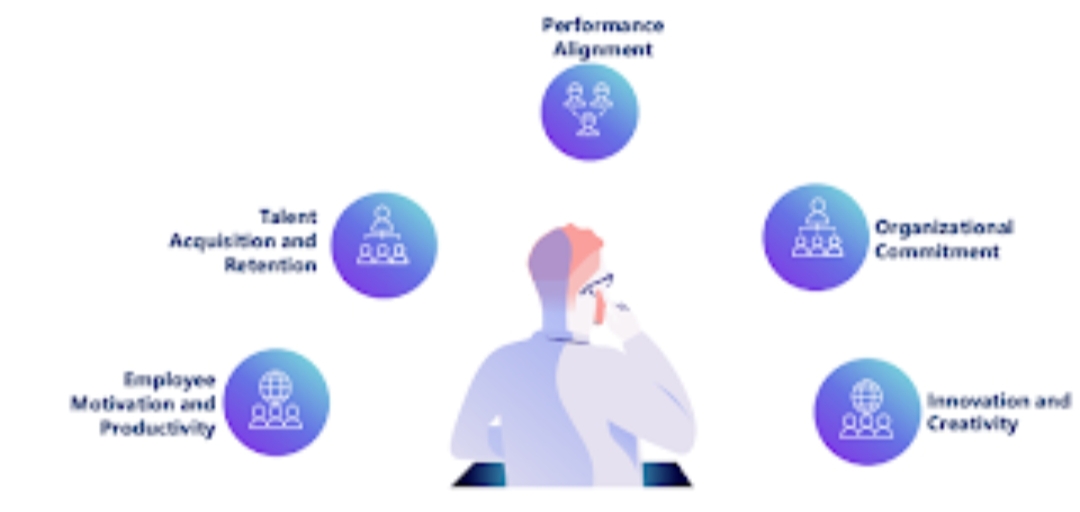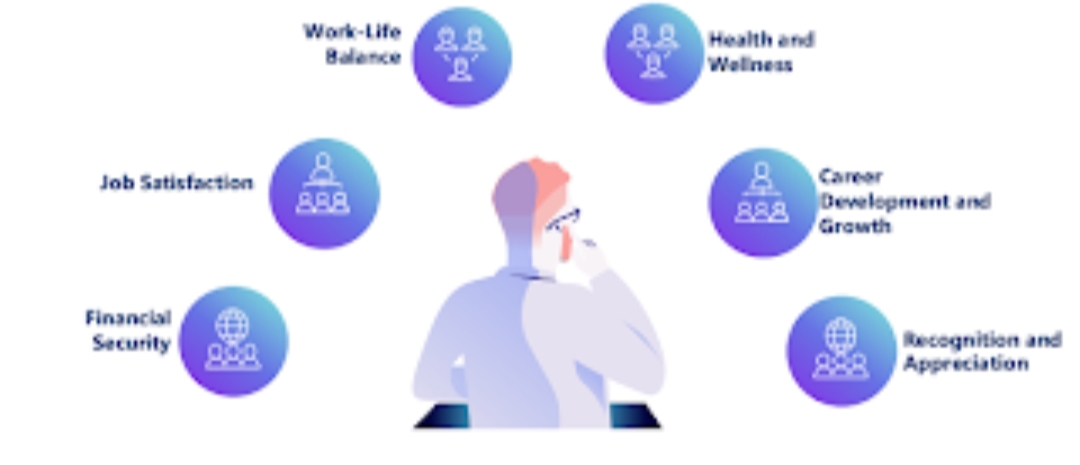Compensation Administration
1/54
Earn XP
Description and Tags
Quiz
Name | Mastery | Learn | Test | Matching | Spaced |
|---|
No study sessions yet.
55 Terms
Compensation Administration
A critical segment of management or human resource management that focuses on planning, organizing, and controlling the direct and indirect payments employees received for the work they perform. It covers the daily wages, overtime, and other compensation-related benefits.
Base
Merit
Incentive pay
Direct Payment example?
Vacation
Deferred payment
Health insurance
Indirect Payment example?
Talent Attraction and Retention
A competitive plan helps in attracting skilled individuals who can drive innovation and growth.
Employee Motivation and Engagement
Fair and competitive compensation motivates employees to perform their best and stay engaged in their roles.
Equity and Transparency
A well-administered compensation system ensures that compensation is distributed equitably. Transparent communication about employees and mitigates potential conflicts.
Employee well being
Extends beyond monetary rewards and includes benefits such as health insurance, retirement plans, and other perks.
Legal and ethical Compliance
Ensures compliance with labor laws and regulations related to fair pay practices.
Organizational Alignment
An organization’s compensation strategy should be aligned with its mission, values, and long-term objectives.
Compensation
refers to the total package of rewards, both monetary and non-monetary, that an employee receives in exchange for their works and contributions to the organization
Base salary
The fixed amount of money an employee earns for their regular work hours, typically expressed as annual figure or an hourly rate.
Variable Pay
Compensation elements that vary based on performance or specific outcomes, such as bonuses, incentives, and commissions.
Benefits
Non-monetary rewards provided to employees, such as health insurance, retirement plans, paid time off, and other perks aimed at enhancing their overall well-being.
Total Rewards
The comprehensive set of compensation, benefits, and incentives that an employee receives as part of their employment
Market Benchmarking
The process of comparing an organization's compensation practices to those of similar companies in the same industry to ensure competitiveness.
Pay Equity
The principle of ensuring fairness in compensation, regardless of gender, race, or other protected characteristics.
Salary Structure
An organized framework that outlines the hierarchy of job roles within an organization and their corresponding salary ranges.
Compensation philosophy
The organization's guiding principles and values that shape its approach to compensating employees, including the balance between internal equity and market competitiveness.
Job Evaluation
The process of systematically analyzing and comparing job roles within an organization to determine their relative worth in terms of compensation.
Merit Pay
A form of variable pay where employees receive salary increases based on their individual performance and contributions
Incentives
Monetary rewards provided to employees as an incentive to achieve specific goals or targets.
Equity Theory
A psychological concept suggesting that employees compare their compensation and efforts with those of their peers to assess whether their compensation is fair.
Variable Pay plan
A structured approach to compensating employees where a portion of their pay is tied to specific performance metrics or organizational goals.
Compensation survey
A systematic collection of data on compensation practices across organizations, often used to benchmark salaries and benefits.
Pay-For-Performance
A compensation strategy where an employee's pay is directly linked to their performance and contributions to the organization.
Cost of Living Adjustment (COLA)
A periodic increase in compensation designed to keep pace with inflation and the rising cost of living.
Deferred Compensation
Compensation that is earned in one period but paid out to the employee in a future period, often used in retirement plans.
Cafeteria plan
A flexible benefits plan that allows employees to choose from a variety of benefits to customize their compensation package according to their individual needs.
Golden Parachute
A compensation agreement that provides substantial benefits to executives in the event of a merger, acquisition, or termination.
The link between compensation and organizational objectives
is a fundamental concept in the realm of human resources and management. It highlights the intricate relationship between how an organization compensates its employees and how those compensation practices contribute to achieving broader strategic goals.
Alignment with strategy
This ensures that every aspect of compensation, from base salary to incentives, supports the organization's mission, vision, and long- term goals.
Performance enhancement
Properly designed compensation plans can motivate employees to perform at their best by aligning their individual goals with the organization's objectives.
Attractions and Retention of talent
A clear link between compensation and organizational objectives can entice skilled individuals who share the company's vision.
Employee engagement and commitment
When employees perceive a connection between their compensation and the organization's overall success they are more likely to feel engaged, committed, and invested in their work.
Cultural Reinforcement
Compensation practices can reflect and reinforce an organization's culture.
Focus on key performance area
Linking compensation to specific key performance areas or strategic initiatives ensures that employees prioritize activities that are aligned with the organization's priorities.
Strategic goal measurements
Effective compensation systems enable organizations to measure progress toward achieving strategic goals. By tying rewards to specific objectives, it becomes easier to track and evaluate success.
Long term Objective
Compensation plans can also be designed to encourage employees to focus on the organization's long-term objectives rather than short-term gains.
Flexibility and Adaptation
The link between compensation and organizational objectives should be dynamic to accommodate changes in business strategies. Compensation plans should be flexible enough to adapt as organizational priorities evolve.
Innovation and Creativity
Organizations can use compensation structures to incentivize innovation and creativity. Rewarding employees for generating new ideas or contributing to process improvements fosters a culture of innovation.
Barter system and early Agriculture
In ancient times, the barter system prevailed, where individuals exchanged goods and services directly. As agricultural societies emerged, compensation often took the form of food, shelter, and protection.
Emergence of monetary economy
With the transition to more complex economies, the use of money as a medium of exchange became prevalent. Wages began to be paid in coins, facilitating easier transactions.
Guild system and craftsmanship
During the Middle Ages, craft guilds emerged, establishing standards for work quality and setting wage scales. Compensation was often tied to the mastery of skills and the quality of craftsmanship.
Industrial revolution and piecework
The Industrial Revolution brought mass production and factory systems. Piecework compensation emerged, where workers were paid based on the number of units they produced. This incentivized increased productivity.
Taylorism and scientific management
Frederick Taylor's principles of scientific management emphasized efficiency and standardization. Compensation practices became more scientific, with pay closely tied to performance metrics and time-motion studies.
Rise of the Social Contract
Labor unions and worker movements advocated for fair compensation and better working conditions. The concept of a "social contract" emerged, focusing on equitable wages and benefits to maintain a motivated workforce.
Introduction of Employee benefits
In the early 20th century, employee benefits such as healthcare, pensions, and paid time off began to be offered by some employers to attract and retain workers.
Shift to the total rewards
In the latter half of the 20th century, organizations recognized the need for a holistic approach to compensation. Total rewards packages, encompassing monetary compensation, benefits, and work-life balance initiatives, gained prominence.
Performance-based pay
As organizations sought to tie compensation more closely to performance, performance-based pay systems emerged. This included bonuses, profit-sharing, and stock options to reward outstanding contributions.
Recognition of work-life balance
In recent years, there has been a growing emphasis on work-life balance and non-monetary rewards. Flexible work arrangements, remote work options, and wellness programs are incorporated into compensation packages
Focus on inclusions and Diversity
Modern compensation practices are increasingly focused on addressing pay disparities and promoting inclusivity. Gender pay equity and diversity initiatives aim to ensure fair compensation for all employees.
Trch-driven Compensation
The digital age has brought about advanced compensation tools and software. Companies can analyze market trends, individual performance, and organizational goals to design more targeted compensation strategies.
Customization and Personalization
Organizations are moving towards tailoring compensation packages to individual preferences and needs. Employees have more choices in benefits, allowing them to create personalized total rewards packages.
Impact of Compensation Practices on Organizational Performance

Impact of Compensation Practices on Employee well-being
